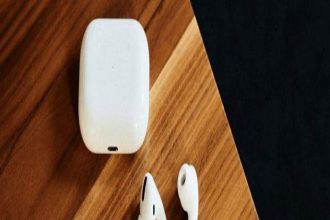The choice of a laptop requires special attention and high responsibility. In today’s world, a person needs it – not only to communicate with the world but also to work. To clearly understand what kind of laptop will fit, you need to decide with what purpose you plan to use your personal computer.
Technical characteristics
The display
One of the main characteristics on which to choose a laptop is the display. Screen diagonal. 15.6 inches is the optimal diagonal. Also, pay attention to the device, the diagonal of which is 17.3 inches. If you suspect you’ll carry your laptop around a lot, a diagonal of 13-14 inches is a great option.
Screen resolution. When choosing a screen resolution, it is worth noting that the best solution is Full HD (1920×1080). Lower resolution is suitable only if you are looking for a budget-friendly laptop with basic parameters.
Most budget-friendly versions use TNs with small viewing angles and mediocre brightness. But it’s cheap and doesn’t look as bad as it sounds. The resolution in these cases is not Full HD (1920 by 1080) but HD (1366 by 768), yet still, the picture looks great, and the pixels are almost invisible.
Ideally, choose a model with a Full HD screen and IPS or VA matrix. In these cases, you will get a great combination of quality, brightness, and excellent viewing angles of 178 degrees.
Processor
One of the most important features when choosing a laptop is the processor. It plays an essential role in a laptop. It provides high performance of the device, its speed, and energy efficiency. The best option for the processor can serve Intel Celeron or AMD Ryzen 5, 7, 9.
Type of matrix. The most popular matrices in laptops are IPS and TN + Film. The matrix provides a correct color rendering and acceptable viewing angles. Choose a matrix that does not strain the eyes and has a smooth picture.
The processor is the heart of the laptop. It largely determines the speed and performance of the chosen model. It will be cheaper to consider variants on chips from AMD, but you can pay attention if not to the newest, but still popular processors of the eighth and ninth generations of Intel.
Among the most affordable AMD models are the E1 and E2 lines (models E1-7010, E2-9000, and E2-9000e). Pay attention if you are planning to buy a simple laptop for office tasks.
If you need something more powerful, there is A4 and A6 line with A4-9120, A4-9125, A6-9220, A6-9225, and so on. And the most powerful but relatively inexpensive are AMD A9 processors, including the A9-9420 and A9-9425 models. When seeking a budget-friendly gaming laptop, it is worth looking at AMD Ryzen 3 and Ryzen 5 processors, including models 2200U, 2300U, and 2500U, 3500U.
In the case of Intel, the simplest and cheapest lineup is the Celeron N series (N3050, N3060, N3350, and N4000). Slightly better is the Pentium N series (processors N3700, N3710, N4200, and N5000). Optimal for all tasks will be Intel i3 eighth generation (i3-8130U, i3-8145U) – they have an excellent combination of quality and price and are suitable even for gaming laptops.
If you still do not know which manufacturer’s processors to choose, just remember this: AMD models are cheaper, but Intel processors have better energy efficiency, which affects almost everything – laptop size and weight, battery life, performance, and more. More or less equal in all indicators are Intel Core and AMD Ryzen series. Moreover, the latter seems even cheaper at almost the same quality and power.
RAM
A solid inexpensive laptop still means fast operation and adequate responses to user actions. Therefore, in addition to the processor, the operating memory (RAM), its volume, and its type are important.
For simple office tasks, working with documents and surfing the net is enough 4 GB RAM. Yet 8 GB will be optimal, just like for the gamer version. It should also be DDR4 type, not DDR3 (which is almost no longer found in new models but still worth warning).
The ideal is 16 GB. It will be enough for everything, but in many models, the RAM can be added later. The main thing is to choose a laptop with two slots for RAM, so you can buy a second strip and make your device as fast as possible.
Built-in memory (HDD and SSD)
With the cheapening of materials, fast SSD drives began to appear in budget-friendly laptops. With them, the computer boots up in 10-15 seconds and works quickly with all types of files.
But do not expect SSD in the cheapest segment, there will be a classic HDD drive of at least 500 GB, which is enough for work and entertainment. The minimum allowable SSD format is 120 GB, but it is better to look for options for 240 GB and above. But in the category of affordable models, this is unlikely to be easy.
Video card
The cheapest laptops have no discrete graphics card. These models are not for games (gaming laptops differ from those), but even they pull some simple ones ten years old or so.
To run something more modern need more advanced graphics cards, but in most cases, budget laptops are equipped with mediocre mobile graphics cards from NVIDIA GeForce MX110 and above, as well as models GeForce 710M/820M/840M/920M/940M or Radeon R5 M330/R5 M430/520/530 and so on.
Optimal options would be the GeForce MX130, GeForce 1050, or GeForce GTX 1650. The last two, however, are relevant for the cheapest gaming laptops, so the office models have only the MX series.
With these graphics cards, you can play simple but modern games at minimum or medium settings, such as CS:GO, League of Legends, and others.
Peripherals
In peripherals, things are much easier. Even the most affordable modern laptops have Wi-Fi and Bluetooth modules, adapters, card readers, webcams, stereo speakers, microphones, and even DVD RW drives (yes, such models still exist even among the new ones).
Of course, all this can be of different quality, supporting different bands, technologies, functions, and other things. Still, the main base, which enables all the essential functions of a laptop, is there even in the most affordable models. Sometimes you can see a laptop without a camera or LAN connector, which makes it possible to access the network only through Wi-Fi.
Is it worth paying attention to the brand when choosing a laptop?
If you need a new one, decide exactly what purpose it will serve. Experts recommend not getting hung up on brands, but looking for a laptop that meets all the basic characteristics, because the device is purchased not to show off in front of friends, but for fast and comfortable work.
How often should you change your laptop?
There is no definite answer, as everyone considers it appropriate to change the laptop when it fails, and some people additionally chase brands and new models. Someone will feel enough changing their laptops every five years while someone else changes them every year.
Changing a laptop directly depends on what the original basic characteristics of the laptop had. There are models that will easily last you a dozen years, provided you repair them in time – yourself or with the pros’ help. However, in addition to practicality, newfangled gadgets play quite a big status role.
When changing a laptop, you should not forget about the financial situation, common sense, and just a personal desire to change the device.














